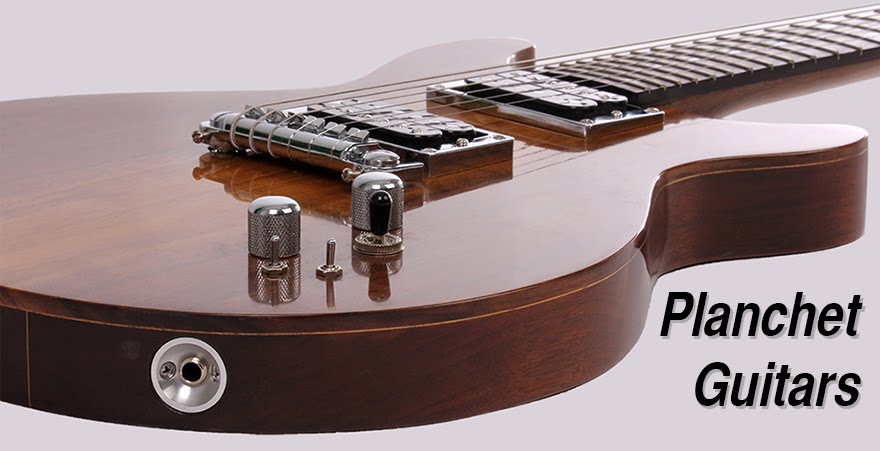Fret Position Markers
So, I started drilling the holes for the 1/4 position inlays on the Firebird and headless necks yesterday. I first marked the position for each hole in pencil, the lined up the brad drill bit points on the drill press with the intersection of the points. The holes are drilled less than 2mm deep to accommodate the inlay dots. (Window light is the best for photos.)I've chosen a black abalone dot for the maple fret board on the purple heart Firebird neck and white for the Pau Ferro fretboard of the headless neck. And, yes, I did offset the dots to the bass side of the neck. No real reason for doing this, it's just a personal preference. I superglue the dots in place, leaving a slight bit of the dots elevated over the fret board. This will be sanded down when I radius the fret board.

Fret Board Radius
Both of the fret boards will be sanded to a radius of 16 inches. This will look like a slight arch in the fret board when viewing it long ways. I first clamped down two pieces of wood about the distance apart of the radius block. The neck is then positioned with a piece of wood on either side to hold it steady. (I picked this technique from a Telecaster forum on tdpri.com.) This helps insure that I get an even sand on both sides.
Because of the arch of the radius block more wood gets sanded away on the sides than in the center. The pencil line that I put down the center of the neck for measuring the placement of the dots comes in especially handy here. I'll know that I've sanded down far enough once that line starts to fade and disappear.
This is a fairly labor intensive workout and I need to be careful not to rush the job. I first start with 80 grit sand and use that to take off most of the wood. Once the center line starts to disappear, I slowly move up in grit - 120, 220 and finally 320.
In the bottom three photos, I've cleaned the fret board with mineral spirits to remove the dust and help make the grain jump out.
Next up for these two neck will be to drill the holes for the side dots. Then I'll be ready to start shaping the profile.
Before I get to that I will run the one-piece neck through this same process above. But I'll need to acquire some new white abalone dots first.








Hey Bud. It's Robin Mccullars. Friend me on Facebook. Nice guitars!
ReplyDelete